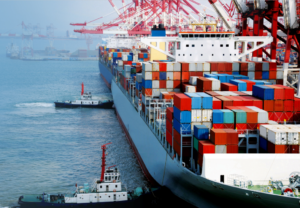

 When compared to US, Western Europe or other parts of the developed world, capital markets in Emerging world are characterized by somewhat lower transparency and governance standards, different / less predictable or understood drivers including cultural aspects, lower coverage and information asymmetry due to lack of on the ground presence. That results in certain inefficiencies evident in these markets. Moreover, due to their technical specs and biases, benchmark index universes do not fully represent the true investable universe. That is the perfect ground for real active management to take advantage and create value.
When compared to US, Western Europe or other parts of the developed world, capital markets in Emerging world are characterized by somewhat lower transparency and governance standards, different / less predictable or understood drivers including cultural aspects, lower coverage and information asymmetry due to lack of on the ground presence. That results in certain inefficiencies evident in these markets. Moreover, due to their technical specs and biases, benchmark index universes do not fully represent the true investable universe. That is the perfect ground for real active management to take advantage and create value.
Active management in Emerging market debt creates value two ways: first of all, by exploiting those inefficiencies and finding opportunities not included in the benchmark or omitted by other investors due to technical reasons, such as issue size, rating, etc. On the other hand, of the same or even higher importance is avoiding potentially value destroying investments, many of which get included in the benchmark automatically. High active share portfolios can exploit both ways and enhance risk-adjusted returns by venturing outside benchmark universe and exploiting a broader opportunity set.
Below I present seven real-world examples of obvious EM markets inefficiencies and off-benchmark picks when good opportunities are uncovered by an alternative view to the investment universe.
1. “Marketing premium” for new issuers
As the markets are developing, more and more Emerging countries and companies enter the international debt markets. Due to info asymmetry and lower research coverage new issuers get to pay sort of a “marketing premium”. A good example is Maxima Grupe UAB, the largest supermarket chain in Baltic countries, which we know particularly well due to the local presence, with moderate debt level as well as solid and proven management team that paid around 0.5% of yield premium due to first entry in the market.
2. Liquidity premium due to small size
Many companies in EM universe suffice amounts of financing that are relevant to the size of their business but are small in comparison to benchmark thresholds. These small issues not only remain outside of major EM indices and are omitted by larger investors, but also get to pay a premium to borrow. For example, Aragvi Holding International, a defensive pick in Moldova, paid double digits on its USD200m issue partly due to the small size.
3. Off-benchmark picks
As already discussed, due to certain size and liquidity requirements, many Emerging market issues do not get included in the benchmark composition. Deep analytical capabilities and local knowledge allow to analyze these opportunities and select the ones with good fundamentals and promising risk-return profile. One of our favorite examples is EUR denominated issue by Republic of North Macedonia, which is outside the commonly used EM benchmarks, missed by USD investors and larger managers, however displaying low debt to GDP level, impressive progress in World bank Doing business ranking and is still one of our top positions.
4. Investor restrictions
Some issuers experience lower coverage due to restrictions on investors’ side, for example, many big-name investors are restricted of investments in terms of credit ratings, size or liquidity. Again, deep EM expertise and experience help uncover hidden gems while flexibility in investment strategy allow to capitalize on that. For example, PPF Arena, a leading telecom player in CEE, that faces a dispersion in agency ratings (BBB- vs BB+), falls outside of investable universe for the strict IG investors.
5. Arbitrage
Another way of exploiting market inefficiencies lies in uncovering arbitrage opportunities between different currency issues. For example, Ivory Coast that has both USD and EUR denominated issues at the same YTM. However, hedging costs for EUR investor buying USD issue is close to 1%; therefore, the off-benchmark EUR issue seems more attractive in this case.
6. Avoiding serial defaulters
On the other side of active management value creation is the ability to avoid value destruction, in other words, not to invest in serial defaulters. Argentina is the most obvious case. As it remains included in the benchmark, index investors automatically get exposed to spikes in volatility.
7. Underweight risky countries and companies
Less obvious than serial defaulters are risky, indebted, poorly managed countries and companies, that can also be underweighted compared to benchmark due to an active approach. For example, Chinese corporates are underweighted in our portfolios as in our view they display substantial asymmetries and complicated structures posing additional risks. Instead, we overweight defensive sectors, such as telecom, food, government, in other parts of the Emerging world.
In a world where passive investments are growing in size for the second decade, there are markets where active management still makes more sense. While EM indices are inaccurate in reflecting the investable universe, tracking them results in missing some of the good opportunities but including the potential losers. As markets in Emerging countries are less efficient, active management can create alpha by exploiting off-benchmark universe and avoiding value destruction.
![]()
INVL and Šiaulių bankas merged their retail services as of 1 December 2023.
Please select Your topic on SB.lt webpage.
![]()
INVL and Šiaulių bankas merged their retail services as of 1 December 2023.